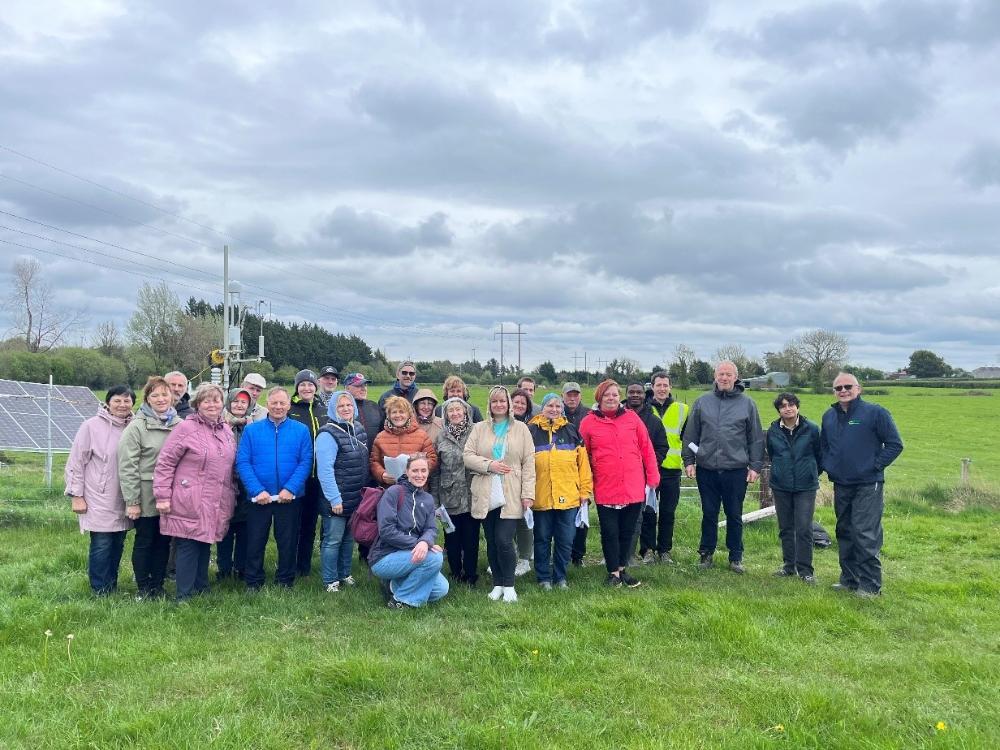John Dune May/June 2025 Update
Breeding season is underway
- Bull selection
- AI synchronisation plan
- Plan for heifers & other cows
Reducing & measuring emissions
- Life Carbon project participant
- Actions to reduce emissions
- Flux tower present on farm
Media
Watch the video below to hear John explain how he's managing his out farm, and why he's investing in AI bulls and synchronisation to improve fertility, performance, and profitability.
Breeding
After experiencing setbacks with infertile and subfertile stock bulls, John focused on rebuilding his suckler cow numbers. He has reached a point where he no longer needs to buy in replacements and can now breed from his own maternal line. However, he has identified a drop in milk production, which he aims to correct through a targeted AI programme.
This spring, John selected 50 of his best maternal cows, all over 35 days calved, for a synchronised artificial insemination (AI) breeding programme. His goal is to produce high-milk, fertile replacements using three high-performance Simmental AI bulls:
- Lisnacrann Fifty Cent (SI2469): For cows with carcass weight >20kg
- Rubyjen Here’s Johnny (SI4350): For lower carcass cows (<20kg)
- Coose Kingston PP (SI6226): For cows with average carcass weight
All bulls are selected for:
- ≥9kg daughter milk
- ≥14kg carcass weight
- ≤8% calving difficulty (at >85% reliability)
- €150+ on the Eurostar index
AI Synchronisation Timetable:
- Sat 19th April – Progesterone device (P4) inserted + GnRH injection
- Sat 26th April – P4 device removed + prostaglandin & ecG injection
- Tues 29th April – Fixed Time AI
Only cows over 35 days calved were synchronised to maximise conception rates.

Figure 1: Only cows over 35 days calved were synchronised
Heifers will be bred to an Angus AI bull for ease of calving. Remaining cows not in the AI programme will go to the Charolais terminal stock bull, offering strong carcass traits.
Watch the video below to hear John explain how he's managing his outfarm, and why he's investing in AI bulls and synchronisation to improve fertility, performance, and profitability.
Greenhouse Gases
John is participating in the LIFE Carbon Farming Project which is running in conjunction with 6 countries (Ireland, Germany, Belgium, Spain, France and Italy) and over 50 partners. Its aim is to:
- Harmonise carbon audits and whole farm sustainability assessments
- Establish carbon funding mechanisms
- Reduce the carbon footprint of livestock by 15% in 5 years
- Earn €3.5 million for avoiding 350,000 metric losses of CO2
Over 700 mixed crop/livestock farms participate in the project, with 40 of these in Ireland.
The information from John’s sustainability survey for the SBLAS scheme is used to calculate a carbon footprint. Most of this data is captured through the AgNav programme such as land area, fuel and power usage, fertilisers, feedstuffs, grazing season length, housing & livestock, manure and LESS use.
The typical carbon footprint for a beef farm is:
- 62% Livestock (methane)
- 12% manure
- 10% synthetic fertiliser
- 8% purchased feed
- 3% fuel use
- 5% other
A carbon action plan has been developed for John’s farm which shows a baseline figure from 2021/2022, a 5 year target, the resulting net margin and the €/t CO2e avoided by meeting the targets, if there was a funding mechanism available for carbon farming in Ireland.

Figure 2: Carbon action plan for John’s farm
The selected climate actions for farms in the Future Beef programme are outlined below. Using protected urea, improving the phosphorus indexes on the farm and reducing the age at first calving are the 3 main actions being undertaken.

Figure 3: Climate actions selected for Future Beef farms
Separate to that, John has a flux tower present on his out farm. It monitors changes in wind speed and gas concentration (CO2 and CH4) to gather information about plant carbon uptake, animal respiration, ecosystem respiration and methane release to determine if the farm is a carbon source or sink.
 Figure 4: John is pictured at the flux tower with a group of farmers on a recent trip from Latvia
Figure 4: John is pictured at the flux tower with a group of farmers on a recent trip from Latvia
